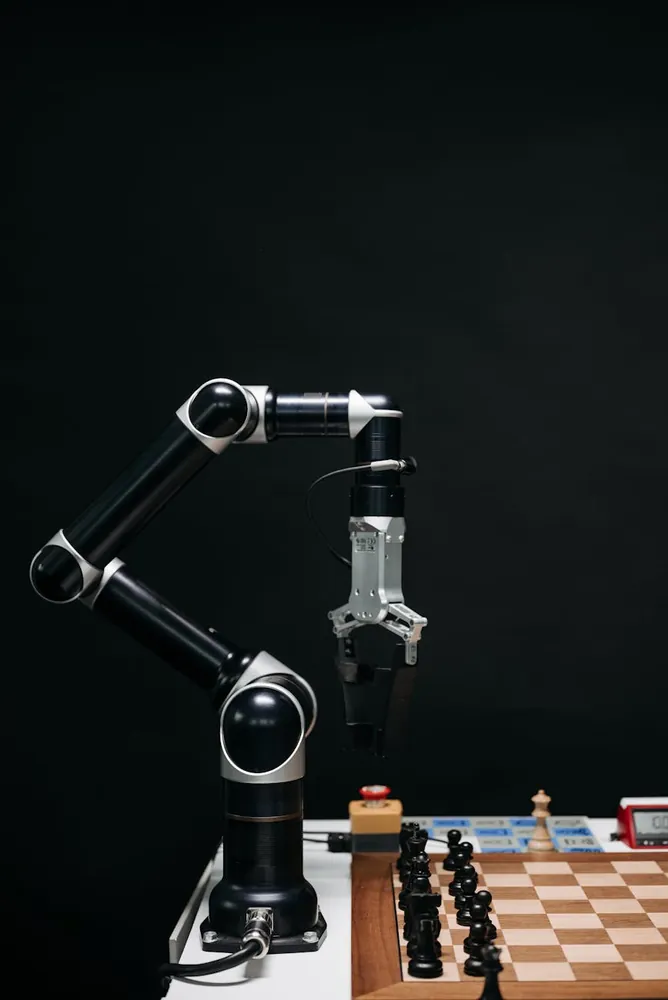the impact of programming techniques on robotic arm accuracy

Understanding the Foundations of Robotic Arm Design
The design of robotic arms is a complex endeavor that combines mechanical engineering, computer science, and material science. At its core, the process involves selecting the right materials, employing precise engineering techniques, and utilizing advanced programming methods to ensure accuracy and reliability.

Material Selection: The Backbone of Durability and Precision
Choosing the right materials is crucial for the efficiency and longevity of robotic arms. Materials must offer the necessary strength without compromising on weight, as excessive mass can hinder movement speed and increase energy consumption. Common materials include:
- Aluminum: Lightweight and corrosion-resistant, making it ideal for arms that require agility.
- Stainless Steel: Known for its strength and resistance to wear, perfect for heavy-duty applications.
- Carbon Fiber: Offers a high strength-to-weight ratio, suitable for precision tasks.
The choice of material affects not only the structural integrity but also the control algorithms. The dynamics of each material type must be accurately modeled within the control software to predict and adjust movements precisely.
Programming Techniques for Enhancing Accuracy
Programming is at the heart of robotic arm operation. Sophisticated algorithms enable these machines to perform intricate tasks with precision and efficiency. Here are some key programming techniques that enhance the accuracy of robotic arms:
Kinematic Modeling
Kinematics involves calculating positions and motions of points or systems without considering forces. Robotic arm programming uses kinematic models to define how joints move in relation to each other. Inverse kinematics is particularly critical as it calculates joint parameters needed to achieve a desired end effector position, allowing for precise control over the arm's movements.
Feedback Control Systems
A feedback loop constantly compares the desired performance with the actual performance, adjusting actions to minimize errors. Proportional-Integral-Derivative (PID) controllers are commonly used in robotic arms to maintain this delicate balance. By tuning PID parameters, developers can enhance the system's response time and minimize overshoot and settling times.
Machine Learning Integration
Machine learning algorithms can significantly improve the adaptability and accuracy of robotic arms. These algorithms allow robots to learn from their environment and experiences, optimizing their operations over time. For instance, reinforcement learning can enable a robot to improve its accuracy by receiving feedback from completed tasks and adjusting its strategies accordingly.
Real-World Applications in Assembly Lines
Robotic arms are indispensable in modern assembly lines due to their ability to perform repetitive tasks with high precision and speed. Industries such as automotive manufacturing, electronics, and pharmaceuticals benefit significantly from robotic automation. Here’s how programming techniques translate into real-world advantages:
- Automotive Industry: Robots perform welding, painting, and assembly tasks with precision, reducing production time while maintaining consistent quality.
- Electronics Manufacturing: Fine-pitched soldering and assembly of small components are achieved with unmatched accuracy thanks to advanced control algorithms.
- Pharmaceuticals: Automated dispensing and packaging processes ensure adherence to hygiene standards and reduce contamination risks.
Developing a Programming Framework for Robotic Arms
For those looking to develop or refine a programming framework for robotic arms, a systematic approach is essential. Below is a simplified framework that can be adapted for various applications:
Step 1: Define Objectives
Clearly outline what tasks the robotic arm will perform. Understanding the specific requirements helps in selecting appropriate materials and designing suitable algorithms.
Step 2: Choose Appropriate Sensors
Sensors are critical for feedback loops and environmental interaction. Select sensors that provide the necessary data for achieving precision, such as encoders for joint position feedback or force-torque sensors for pressure sensing.
Step 3: Develop Kinematic Models
Create both forward and inverse kinematic models tailored to your design. These models serve as the foundation for motion planning algorithms that guide arm movements.
Step 4: Implement Feedback Control Systems
Integrate PID controllers to fine-tune the system's responsiveness. Constantly test and adjust parameters based on real-time performance data.
Step 5: Test Machine Learning Integration
If applicable, employ machine learning techniques to enhance adaptability. Use simulation environments initially to train models before deploying them in live environments.
Conclusion
The impact of programming techniques on robotic arm accuracy is profound, influencing both the development process and operational effectiveness across industries. By integrating advanced kinematic modeling, precise feedback control systems, and machine learning approaches, developers can create robotic systems that not only meet but exceed modern industrial demands.
 Modern Knowledge House
Modern Knowledge House